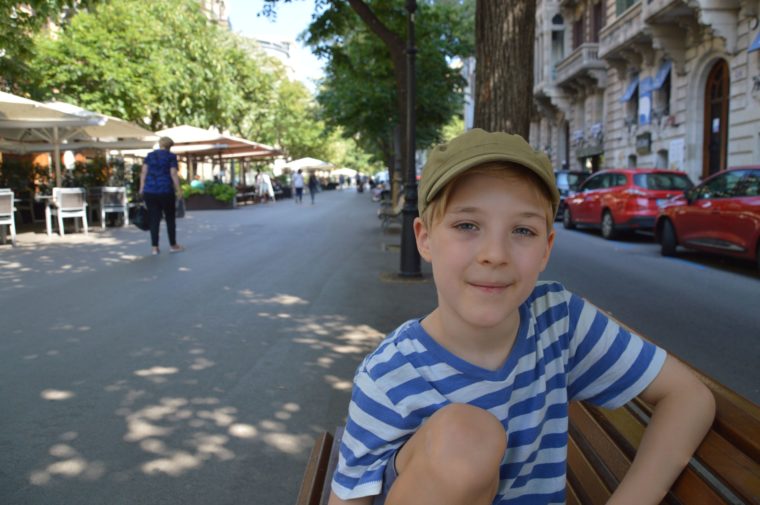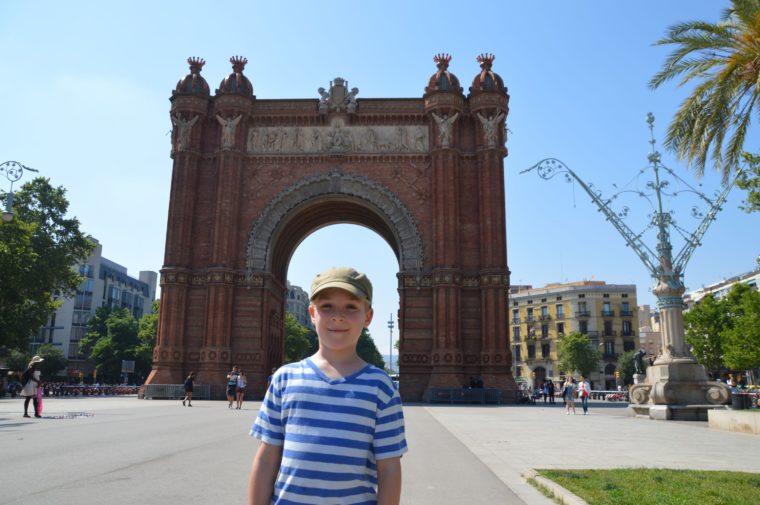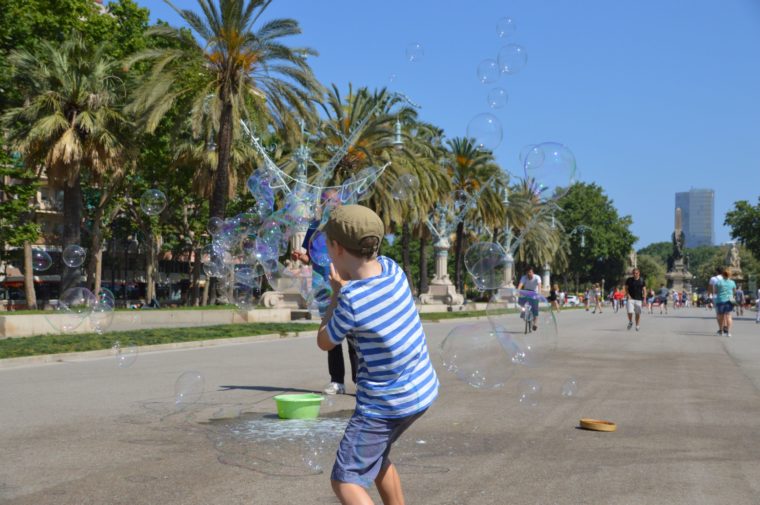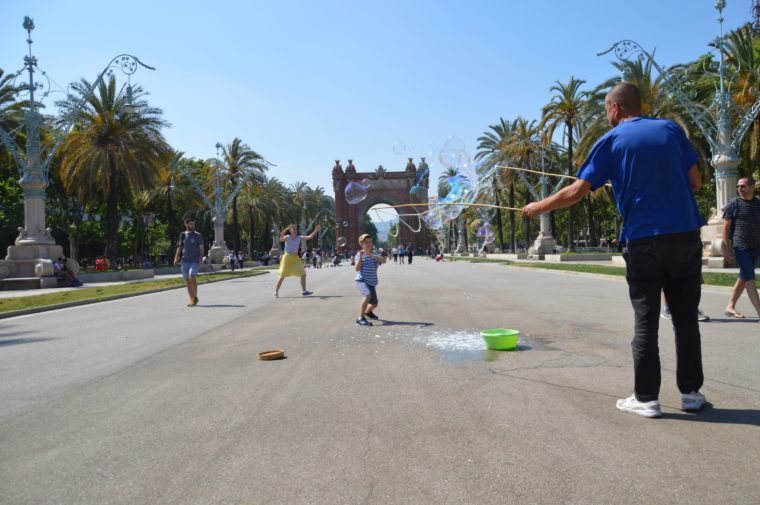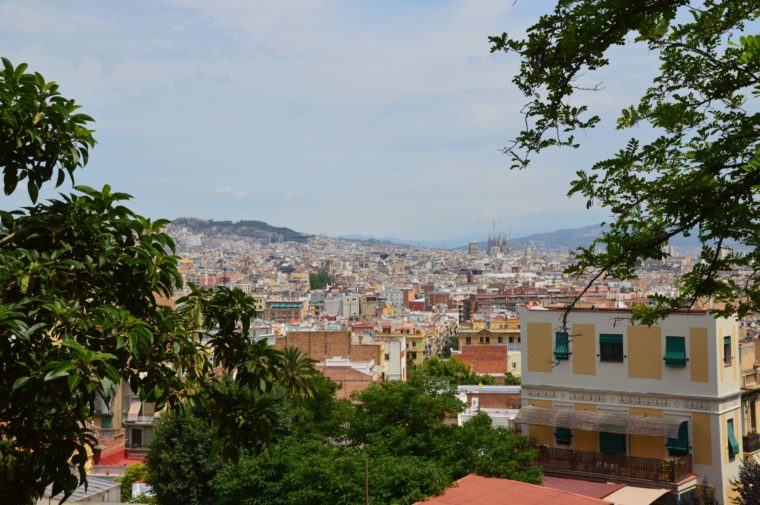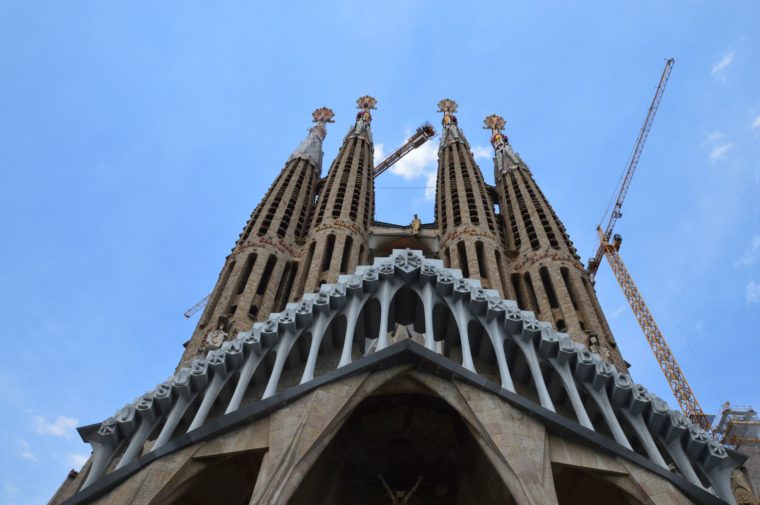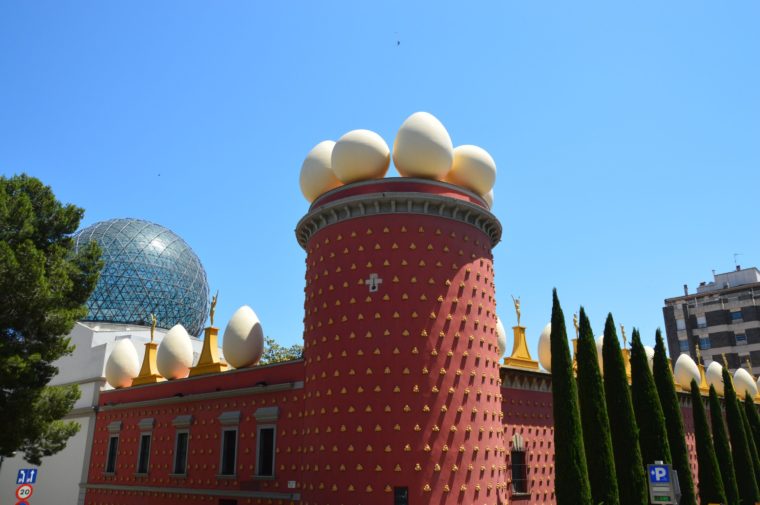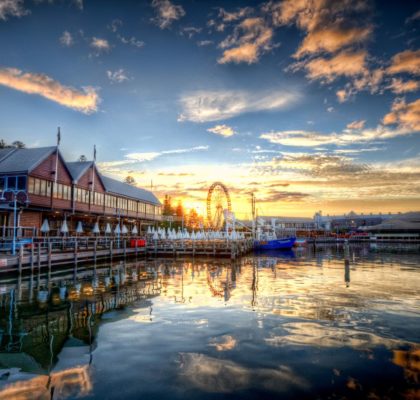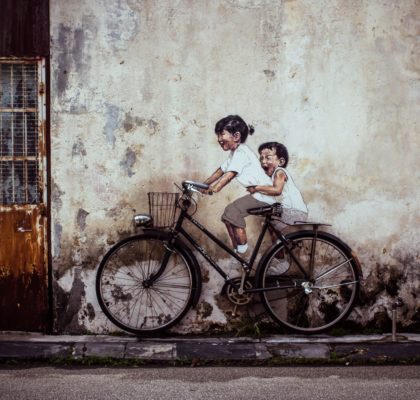Beautiful Barcelona
Cool culture. Terrific tapas. Lovely locals.
We absolutely adored our week in Barcelona, now topping the list of sabbatical stops we’d like to visit again. I’m not sure we’ll ever be able to match the combination of perfect weather, a well-chosen Airbnb, and a holiday mood induced by two months of something like real life in Australia – but we’d love to try.
Our first day started with a stroll down La Rambla towards Plaça Catalunya and the Picasso Museum. Most Spanish cities have some version of La Rambla, here a glorious mixed-use street with a broad pedestrian path flanked by separate bicycle and car lanes, graced on both sides by tempting shops and cafés. Sam knew a little bit about Picasso from the art talks aboard the Norwegian Star, enough to have a general impression of not really liking him for some reason. We learned a lot at the museum and now Sam can explain exactly what he hates about his paintings. If you enjoy Picasso then there is plenty to admire here, but Sam just found a lot of the paintings disturbing and I must confess that every single one I liked turned out to be Picasso trying to copy one of the Old Masters hanging in the Prado.
The Museu de la Xocolata was a bigger success, starting with the entry ticket wrapped around a fantastically rich dark chocolate bar. Along with interesting displays about the history of chocolate fabrication and consumption, the museum showcases spectacular sculptures made entirely of chocolate, from elaborate recreations of architectural landmarks like Gaudi’s Sagrada Familia cathedral to imaginative depictions of literary and cinematic moments. Sam was utterly transported by the combination of chocolate to eat and see: he didn’t stop talking there or afterwards during our stroll towards Barcelona’s Arc de Triomf, one of the many architectural links between Barcelona and Paris. Indeed, Barcelona almost got the Eiffel Tower too, when it hosted the World’s Fair in 1888; Paris ended up with it in 1889, though Catalunya can still boast its Eiffel engineering marvel, a bridge in Girona.
On our way home we stopped for our first tapas, at a great little place called Bormuth where we enjoyed fried calamari with an aioli dip, crunchy chicken croquettes with mustard, meatballs in a boozy sauce, and spicy olives. Our overall first impression was of a friendly, fashionable city that blends the best aspects of Florence and Paris with a little dash of Copenhagen.
We started day two with a visit to the beautiful Mercat Galvany, our local market. There’s a daily market in every Barcelona neighbourhood, but ours is special because it’s frequented by well-heeled locals expecting top-notch products, not tourists content with any old rubbish. We were greeted by a woman handing out cards in Catalan (which is similar to French and not impossible for us to read) illustrating the right amount of each kind of food to buy, part of a government program to cut down on food waste. She explained that in Barcelona it’s feasible to stop at the market every day or two, purchasing just what’s needed. Heeding her advice, we chose one of each kind of peach and pear, small portions of cured meats, tiny wedges of Manchego, a few assorted pastries, and a Catalonian-style baguette, the best bread we’ve had since September in France. After spending two months in pricey Australia and the month before that in even pricier New Zealand, we were absolutely thrilled by all the gorgeous food we bought for a pittance here, so the message to buy a little, often, was timely: we would certainly have come home with way too much. The market was less than five minutes from our apartment, so we really could stop in every morning for juicy doughnut-shaped peaches, sweet Comice pears, farm-fresh eggs, and all manner of meats and cheeses.
Sam had his eye on the science museum, CosmoCaixa, so after taste testing our market haul we took the metro three stops and there we were. The public transportation is really excellent in Barcelona, supported by a fantastic app and included in the Barcelona Card that we purchased, which gave us free access to two dozen museums and tons of discounts elsewhere. We don’t bother doing the math anymore to decide if these cards are a good deal because we end up popping in to a lot of museums that we wouldn’t commit to for a full-length visit, often discovering surprise favourites without that pressure to endure something just because we’ve paid for it.
This was not an issue at CosmoCaixa, an enormous and engaging science museum with plenty to keep us entertained all day long. Sam especially enjoyed an exhibit on the “linguistic brain” that used many interactive displays to show how humans evolved to have language, how all languages evolved from a common root, and how the modern human brain processes language. We saw a giant version of Foucault’s pendulum, played outside in the Archimedean garden, and built a few gadgets in the creativity space.
The Joan Mirò museum was a surprise hit on day three. None of us were that keen on Mirò to start with, but after the Picasso museum we found his childlike simplicity and vibrant primary colours refreshing. Mirò is a big influence on the look of Barcelona, less monumentally than Gaudi but nevertheless recognizably, particularly in its favourite colour scheme for logos like the Catalunya bank. His museum is pleasant, with wide, welcoming spaces and a great little café. I wanted Sam to send everyone a postcard of “Man and Woman in Front of a Pile of Excrement” with a note saying “Saw this, thought of you,” but he was afraid that we wouldn’t have any friends left after that.
We had lunch at Luki, a quirky spot in the hipster part of seedy El Raval with a small but delicious array of lunch dishes. Sam had his first taste of Iberico pork in the form of fall-off-the-bone ribs, while Patrick and I shared a baked whole fish with potatoes, a local specialty of “smashed eggs,” and an amazing side dish of crunchy diced vegetables compressed into a terrine with a light vinaigrette and fresh mint. Highly recommended, although we could have done without the postprandial stroll back to La Rambla that took us past daytime hookers and sex shops.
Day four was a work day for me, so Sam and Patrick took the opportunity to catch up on Language Arts and Math while I motored through a backlog of tasks. Later we strolled along La Rambla to an internet-famous tapas place, Cervezeria Catalana, that was only slightly more hit than miss, with tourist prices for a tourist clientèle. Not recommended. Still, it was a beautiful evening for a ramble in spectacularly gorgeous Barcelona.
On day five we continued the greatest Spanish artists tour. Picasso? Check. Mirò? Check. Dalì? That’s tomorrow. OK, this must be Gaudi day. We strolled in Park Guell, puzzled over the enjoyable but completely uninformative 4D Gaudi experience, and paid a visit to the Sagrada Familia, Gaudi’s hallucinogenic cathedral, in its real-life, non-chocolate form.
If Gaudi’s architecture is hallucinogenic, Dali’s museum / mansion / mausoleum is on a whole other class of drugs. To get to this temple to the great Spanish surrealist on day six we joined a bus tour that brought us to Dali’s town of Figueres via Girona, another place we’d love to visit again. Girona is a gorgeous little town full of picturesque buildings, charming shops, and delicious food including the local speciality, xuixo (pronounced shoo-shoo). It’s my new obsession, and unfortunately it’s particular to this town – or perhaps fortunately, given its calorie count. Imagine a cross between a croissant and a cruller, filled with custard, deep fried, and sprinkled with sugar crystals. This alone might be enough to bring us back to the Barcelona region: after all, I’m still dreaming about my previous hyper-local food obsession, the gallette bourgueilloise that I ate once during our honeymoon, and have routed the first day of our upcoming French road trip to pass through the town of Bourgueil in the Loire Valley. Girona is a major foodie destination, so we might try not to fill up on xuixo to leave room for some of the town’s Michelin-starred restaurants next time.
After too short a visit to this charming town we continued on to Figueres, where Dali converted a ruined Roman theatre into a temple to himself and his beloved wife / muse, Gala. We were completely charmed by Dali’s offbeat megalomania and showmanship.
After such a full, fascinating, and delicious week we were sad to leave Barcelona, especially in the midst of breaking news that Catalunya would be holding a referendum in October to consider the long-mooted question of secession from Spain. As former Quebeckers we understand the linguistic and cultural tensions in the Catalonian-majority region of a Castillian-majority country, but also the rifts that open during and after a referendum. Whatever happens in October, we hope that Barcelona will still be its cool, charming, delicious self the next time we visit.
This entry was posted in Destinations